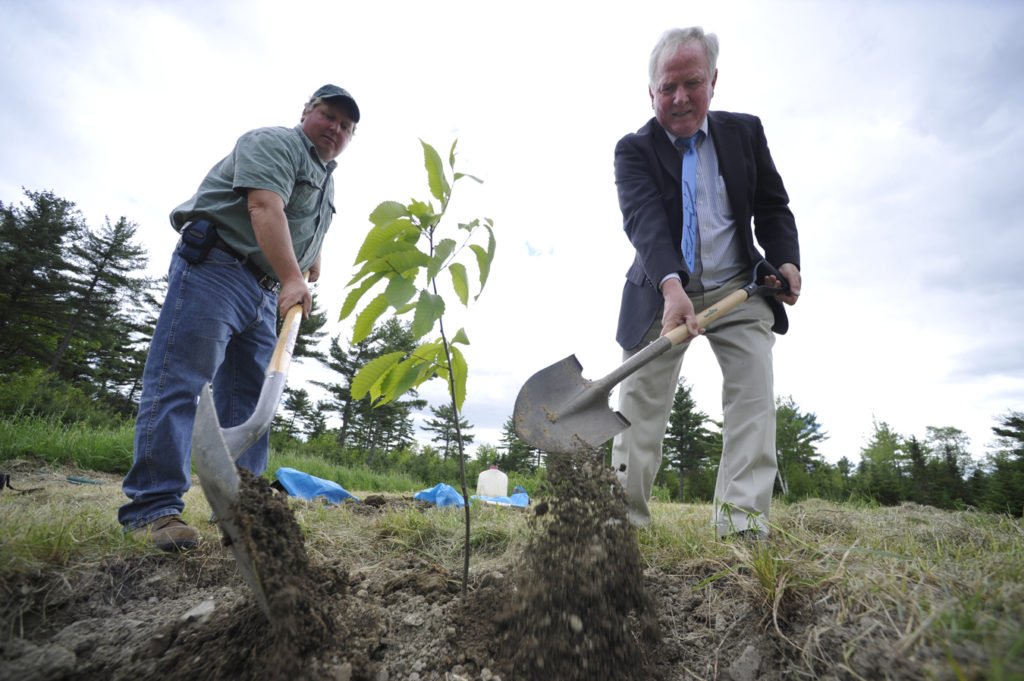How to increase carbon sequestration
The human contribution to the carbon cycle has been shown scientifically to be the primary factor driving climate change. One way to manage the amount of excess carbon in the atmosphere could be by figuring out how to increase carbon sequestration.

Carbon sequestration is the process of taking up carbon dioxide from the air and storing it in soil, oceans or living organisms.
Certain natural systems can be managed to more efficiently sequester carbon. One example, particularly in Maine, is through managed forest ecosystems.
“You can enhance carbon sequestration by good forest management practices, [like] thinning the forest [and] capturing trees that might die and emit carbon,” said Daniel Hayes, assistant professor of geospatial analysis and remote sensing at the University of Maine School of Forestry and Resources. “[That] keeps the trees growing fast and minimizes the mortality that would happen naturally.”
Crops in agricultural systems also absorb carbon, but not much is sequestered because the plants are harvested. Plus, agricultural practices, such as running machinery and using carbon-intensive fertilizers, means that the industry as a whole generally produces more carbon than it stores.
“[Agriculture] plays a huge role in the cycling of carbon but when we’re talking about is the longer-term storage, [it’s] not as big of a role as forest products,” Hayes said. “On balance, agriculture is usually a net emitter of carbon.”
Better management practices can help agricultural systems sequester more carbon than they emit, though.
“A lot of this would get back to agricultural practices,” said Aaron Weiskittel, director of the Center for Advanced Forestry Systems at the University of Maine School of Forest Resources. “A big one is tilling. That creates a lot of carbon release because you disturb the soil and cause decomposition and breakdown of organic matter which emits carbon. Cover cropping is [also] big. If you can get a very large cover crop during your times of planting you can increase the carbon content of the soil and reduce the use of inorganic fertilizers that take a lot of carbon to produce.”
Aside from natural carbon sequestration, there are also technological attempts to take up and store carbon artificially in order to better address the global carbon crisis. In the field “geoengineering,” a number of creative technologies have emerged to do just that, like artificial “trees” that scrub carbon from the air.
However, aside from not yet being scalable, these technologies are controversial because they have to be powered.
“The problem is that they all require energy, so you’re emitting some sort of carbon,” Weiskittel said. “There’s some energy being required to do these conversions.”
There is also the issue of where they store the carbon after it is collected. Proposals for such technology generally end up storing the carbon in the natural systems that artificially sequester carbon, like the ocean and the soil, but doing so can disrupt the balance of these systems.
“There are geoengineering solutions that say, ‘Let’s pump more [carbon dioxide] into the ocean,” Hayes said. “Chemistry is the problem there. There’s other feedback or consequences to that. It changes the pH level and makes the ocean more acidic and bleaches the coral reefs.”
Why does carbon sequestration matter?
Carbon sequestration plays an important role in balancing the “carbon budget” and achieving “carbon neutrality,” which is a goal for many policymakers looking to take a stand against climate change and global emissions. In a September 2019 United Nations address, Gov. Janet Mills pledged that Maine will have a carbon-neutral economy by 2045.
“The forest is the big one, relatively, in terms of the numbers for the state of Maine,” Hayes said. “Then there’s also some sequestration that would happen naturally in wetlands, where carbon is waterlogged and doesn’t decompose as easily.”
Hayes emphasized that, while individuals can do things like support conservation projects, drive less or stop tilling their fields in order to reduce their personal carbon footprints, the changes in carbon sequestration have to happen at a global scale to truly make an impact.
“I don’t see this as a solution for any individual person and the choices they make,” Hayes said. “In terms of sequestration, this needs to be at a big scale. The typical person isn’t going to be able to store a bunch of carbon in their backyard and make a huge dent in the carbon budget.”
